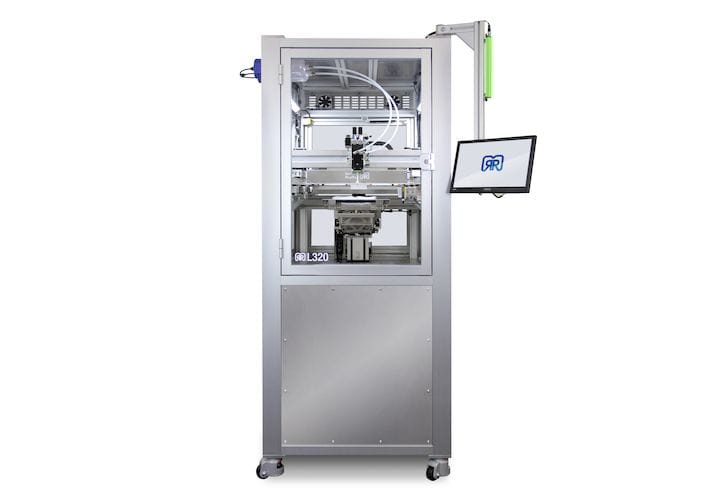![The German RepRap L320 Silicone 3D Printer [Source: German RepRap]](https://fabbaloo.com/wp-content/uploads/2020/05/image-asset_img_5eb09430dd357.jpg)
German RepRap announced the availability of a new silicone 3D printer, the L320.
The company, located near Munich, has been exploring the capabilities of silicone 3D printing for a couple of years. We first saw a prototype silicone 3D printer from the company in 2017, where they seemingly presented the rudimentary technology at a trade show on a whim.
It turned out that they had a tiger by the tail, as they received countless enquiries from this presentation. Soon, they began offering the LAM prototype silicone 3D printer for sale as a kind of “early product” to eager customers.
The device used a new form of 3D printing they call “LAM”, for “Liquid Additive Manufacturing”. It involves two liquid extruders (syringes, basically) that each deposit two different liquids. When “A” and “B” are combined, chemical reactions take place that when exposed to a second pass to heat it, form a solid silicone structure.
German RepRap believes their LAM process is superior to the ultraviolet light approaches used by the few competitors in the silicone 3D printing market.
Then, in the fall of 2018, German RepRap announced their first “real” version of the technology in the form of the L280 Silicone 3D Printer. This device was highly refined as it included all the normal features one would find on a 3D printer.
L320 Silicone 3D Printer
Today we find the company has now released a new model, the L320. By coincidence, we also find the older L280 is no longer listed on their website, suggesting that the L320 is replacing the L280.
The L280 offered a build volume of 280 x 280 x 200 mm, hence its name. We wondered about the 200mm Z-height, however, saying in our previous post:
“I can’t imagine one being 200mm tall.”
That sentiment seems to have carried forward into the design of the L320, which has a different build volume of 250 x 320 x 150 mm. The “320” is where the new product’s name originates, but it’s very interesting to see that the Z-height has decreased from the L280’s 200mm to a shorter 150mm. Perhaps they agree with me that few would be 3D printing tall silicone objects.
I suspect LAM will be used to create only certain kinds of objects, such as gaskets, seals, and moulds for casting.
Other features on the L320 are mostly similar to that of the L280. For example, both machines sport swappable nozzles of 0.23, 0.40 and 0.80mm diameters. The L320 seems to have a more robust frame and sturdier enclosure.
They’ve also transformed the control interface from a small panel mounted at the base of the build chamber to a full-size display mounted on a swivel-able arm at the top of the unit. I suppose this could make it a bit easier to operate as you now won’t have to bend over to operate the controls.
Silicone 3D Printer Pricing
We’re not certain of the pricing for the new L320, but previous versions were in the US$65K range, so I would expect pricing at a similar level.
If you’re considering acquiring a silicone 3D printer, you might want to check out the new L320.
Via German RepRap










